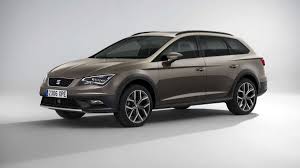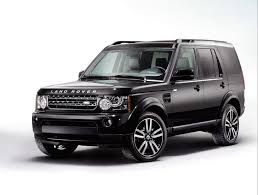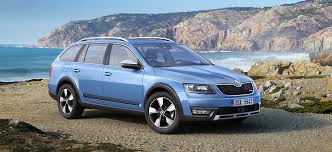It’s winter, and that’s official. If you lashing rain and plummeting temperatures hadn’t given you a clue, then the onset of endless Christmas muzak to accompany your shopping trips should have done the trick. And as winter settles in, you can pretty well comfortably sit back and watch the 4x4 sales ticker start to rise. Once the weather worsens, and especially if we get snow and ice (as has been forecast again for this year) then the 4x4 fun really kicks off. Values of used four-wheel-drives will rise noticeably (with a commensurate drop in the values of convertibles and other low-slung sporting machines) and dealers will start to run out of new stock. In fact, during the last big freezes of 2010 and 2011, Fiat dealers actually ran out of (admittedly small) stocks of Panda 4x4s, as ice-bound punters saw them as the cheapest route to defeating Mother Nature.
Do I really need a 4x4?
 But the question is; do you really need one? And the answer is, expect in particular circumstances, no. Ireland has, of course, been a predominantly rural nation since its birth, but that has started to change in recent years – now, more than half of us have abandoned the countryside and these days live in towns and cities. That at a stroke removes the genuine need for 4x4 vehicles for most of us. Simply put, city streets will generally stay more clear of snow and ice than their rural counterparts.
But the question is; do you really need one? And the answer is, expect in particular circumstances, no. Ireland has, of course, been a predominantly rural nation since its birth, but that has started to change in recent years – now, more than half of us have abandoned the countryside and these days live in towns and cities. That at a stroke removes the genuine need for 4x4 vehicles for most of us. Simply put, city streets will generally stay more clear of snow and ice than their rural counterparts.
If you really, actually do live way down the country then, potentially, yes, you might actually need a 4x4. Away from the main roads and motorways, Ireland’s secondary road network is in a perilous state and the extra ride height (and critically, the extra height of the tyre sidewall) of many 4x4s and SUVs gives you a definite advantage when the hedges start to close in on either side. The lofty springs mean you have a slightly better chance of fording a flash-flood than someone in a more conventional car (although there are caveats when it comes to that, which we’ll get to in a minute) while the more generous tyre sidewalls, with their higher profiles, give a bit more protection against pothole punctures than cars with big rims and low profiles.
Are 4x4 always better in a flood?
 On the flood question though, you cannot take things for granted, and it’s an issue that many of us will have faced in the teeth of Storm Desmond. If you buy a four-wheel-drive car made by a company which specialises in them, such as Land Rover or Jeep, then you are buying something that has been specifically designed to tackle tricky conditions. Land Rover and Jeep only sell cars that have a ‘wading depth’ of at least 500mm, or about a foot-and-a-half. To ensure this, items like air intakes and fuse boxes are located higher up in the engine bay than normal, keeping them out of water and harm’s way. In other, less dedicated SUVs and crossovers, this may not be true so you need to check your maximum wading depth before charging into a flood.
On the flood question though, you cannot take things for granted, and it’s an issue that many of us will have faced in the teeth of Storm Desmond. If you buy a four-wheel-drive car made by a company which specialises in them, such as Land Rover or Jeep, then you are buying something that has been specifically designed to tackle tricky conditions. Land Rover and Jeep only sell cars that have a ‘wading depth’ of at least 500mm, or about a foot-and-a-half. To ensure this, items like air intakes and fuse boxes are located higher up in the engine bay than normal, keeping them out of water and harm’s way. In other, less dedicated SUVs and crossovers, this may not be true so you need to check your maximum wading depth before charging into a flood.
But it’s ice and snow, not water in its liquid form, which most exercises the potential 4x4 buyer. It only takes one or two days of being marooned at home, unable to get to work, school or the shops, that kicks off the four-wheel-drive buying desire in so many of us. But wait, because there are options you need to think of.
First off, buying a big, tall SUV-style 4x4 can be expensive. The vehicles themselves are pricey and their running costs, thanks especially to the extra weight and mechanical drag that are part and parcel of their all-wheel-drive hardware, mean that your fuel and motor tax costs can make a big jump upwards.
Alternatives
 So it’s worth remembering that increasing numbers of ‘normal’ cars come with four-wheel-drive options. Again, these are usually more expensive than their front-wheel-drive cousins, but still cheaper to buy than a full-on SUV. Models such as the Seat Leon X-Perience and Skoda Octavia Scout offer 4x4 traction and a little extra ride height without the price and tax penalties of bigger vehicles. And the little Fiat Panda 4x4, still Ireland’s smallest car with four-wheel-drive, is still on sale and still remarkably talented at dealing with tricky conditions.
So it’s worth remembering that increasing numbers of ‘normal’ cars come with four-wheel-drive options. Again, these are usually more expensive than their front-wheel-drive cousins, but still cheaper to buy than a full-on SUV. Models such as the Seat Leon X-Perience and Skoda Octavia Scout offer 4x4 traction and a little extra ride height without the price and tax penalties of bigger vehicles. And the little Fiat Panda 4x4, still Ireland’s smallest car with four-wheel-drive, is still on sale and still remarkably talented at dealing with tricky conditions.
Or you could just invest in winter tyres. A set of winter rubber, plus the associated storage costs of having a second set of wheels to look after all year round, can seem dauntingly expensive at first glance, but you have to remember that they will still almost certainly be cheaper than trying to trade up to a new or used 4x4. Fitted to a car with a decent traction control system, winter tyres can give astonishing levels of grip and traction when dealing with snow, ice and cold, wet roads. Once the ambient air temperature drops below seven degrees celsius, they vastly out-perform conventional ‘summer tyres’ and bring an enormous extra margin of safety to winter driving.
One word of warning though. Neither four-wheel-drive nor winter tyres makes you impervious to the weather or the road conditions. All-wheel traction may help you get going in slippery conditions, but remember you still have to be able to steer and stop, so the best advice, far and above switching to an SUV or buying winter rubber, is simply to slow down, take your time, turn on your lights and drive carefully.